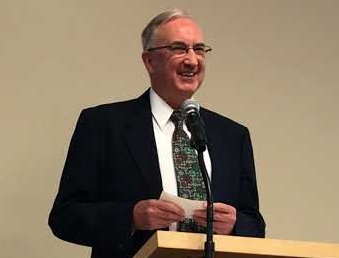|
|
A
Celebration
of
the Life of
|
|
My first memory of Roy came before I met him in person. I was a Ph.D. student at Imperial College in London, England about 10 years after Roy had completed his Ph.D. in the same department. Part of my “education” was to read his Ph.D. thesis which was on the subject of colour rendering – the effect that different light sources have on the colour appearance of objects. I was immediately impressed by Roy’s penchant for thinking outside the box. Whereas most researchers in the field had used objects such as paint chips, Roy decided that natural objects would be more interesting. He used human faces and hair but, being in England, he added a very English object to his studies. Other people have used human skin as an important object but, as far as I know, Roy is the only person to have studied the effect of different light sources on the colour of a cup of tea! I first met Roy at a CIE meeting in Vienna in 1963 but I did not really get to know him until I started work at NRC in 1965. Roy was in charge of the photometry and radiometry laboratory and one of the first of his projects that I was aware of was the development of a television colour calibrator. This was much needed because television colour in those days could be very variable. The encoding system in use in North America at the time was the NTSC system. I think this stood for “National Television Systems Committee” but most people knew it as “Never Twice the Same Colour.” Roy’s calibrator helped to improve the situation and was used in TV studios across the country. Roy was responsible for maintaining and developing Canadian standards of light and radiation. He built a state-of-the-art spectroradiometer. This was housed in a large wooden insulated enclosure designed to keep the temperature stable. Technically, it was “portable” because, despite the fact the box was about 5’ high and about 5’ wide, it was on castors and, with the help of three or four people, it was possible to manoeuvre it through the door of Roy’s laboratory, into the freight elevator and up to my laboratory where, after leaving it for a few days to it to recover from the trauma of being moved, I could use it to calibrate my colorimeter. In the 1970’s Roy’s work formed an important basis for establishing the relationship between the world’s fundamental unit of light (known as the candela) and the fundamental unit of power (the watt). This relationship remains unchanged to this day. Before he retired in 1979, Roy began the development of a new spectroradiometer. The old one remained in use for many years after he retired but has now been assigned to the happy hunting ground of spectroradiometers. The new spectroradiometer that he designed and started to build remains the basis of NRC’s spectroradiometric calibrations today. As a result of being Canada’s leader in the field he was appointed head of the Photometry and Radiometry Committee of the CIE, the International Commission on Illumination. In that role, he coordinated international work for many years. I am not sure that it was Roy’s favourite occupation but it was a very important one that he performed with his typical thoroughness and competence. I would like to end with something that brought together my memories of Roy as a scientist and of his strongly-held anti-war views. The occasion was a ceremony held a few years ago to commemorate the 50th anniversary of NRC’s work on stabilizing and defining the colour of the Canadian flag. Roy’s role in that work was, I believe, larger than often acknowledged which is a tribute to his modesty. After receiving a plaque commemorating the work, Roy was photographed in front of the flag and asked about his feelings. His main comment in response was that he hoped that the flag would never be used to march behind into war. In conclusion, Roy was a modest man, an
excellent and innovative scientist, an unconventional thinker, and a good
friend. |
|







